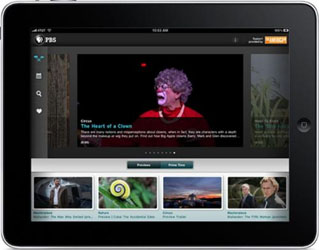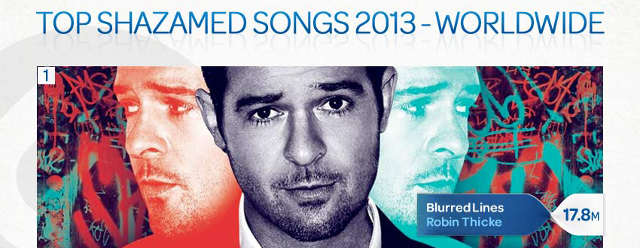Newspapers, TV on Deathbed; Online in Baby Bed
You would agree that traditional media – print and television – is headed for the graveyard of those business products that have completed their journey in the corporeal world. And now new-media or Web-based online bytes will get increasingly consumed by people.
The same is revealed by a new survey that says traditional media is in trouble.
How come?
The survey tells newspapers are struggling with circulation and magazines like Newsweek are being sold for $1. And, while two-thirds of Americans (67%) still agree that they prefer to get their news in more traditional ways such as network television and/or reading newspapers or magazines in print, over half of Americans (55%) say traditional media as we currently know it will no longer exist in ten years.
Forward-looking content providers are already aware of the emerging trends and have started evolving to meet the changing consumer demands. While traditional print players and TV companies have shifted their focus toward online content delivery channels, a few have decided to go a step further.
Rodale Inc.’s Runner’s World, for example, has recently introduced the digital edition of the publication designed exclusively for iPad. It is available for purchase in the Apple App store for $4.99.
Runner’s World is claimed to be the first consumer running magazine to enter the iPad market.
The September issue of the magazine served as the title’s inaugural digital edition and was exclusively sponsored by Puma. (Read: Runner’s World Magazine on the iPad)
Other players are also trying to meet the increasing digital demand by offering innovative products.
Look at Barnes & Noble, a leading bookseller. It has launched NOOKcolor, a full-color touch Reader’s Tablet that delivers digital books, magazines, newspapers and children’s books on a thin and portable device. (Read: Reading Goes Digital on NOOKcolor Device)
Like print, more and more TV content companies are also embracing new-media channels. The first full episode of the multi-part series Circus will premiere on PBS for iPad.
Moreover, PBS has announced the beta launch of a new website, featuring local content from member stations, full TV episodes from series and auto-localization features. (Read: Circus to Premiere on PBS for iPad)
Advertisements:
Come, Work with Us
Digital Media Campaigns
Additionally, the survey says, half of U.S. adults (50%) say they tend to get almost all their news online.
These are some of the findings of a new 24/7 Wall St./ Harris Poll survey of 2,095 U.S. adults surveyed online between October 8 and 12, 2010 by Harris Interactive. The findings were released today, Oct. 28.
Focusing on specific media sources, when Americans are looking for news, almost half (46%) say they go to local television news all the time while about one-third say they go to local newspapers (35%) and network television news (31%).
Two in five adults, however, say they never go to national newspapers like the New York Times or weekly news magazines (42% each) when they are looking for news.
Additionally, in looking at the amount of time people are spending with print media, one-quarter of adults say over the past year, the time they have spent reading newspapers in print and reading magazines in print has declined (25% and 23% respectively).
Conversely, three in ten adults (28%) say the time they have spent visiting online news and information sites has increased over the past year.
One reason traditional media should be worried is that media consumption and attitudes towards media are very different by age. Only one-third (33%) of those 55 and older say they tend to get almost all their news online compared to almost two-thirds (65%) of those 18-34 years old.
And, while four in five of those 55 and older (81%) prefer to get their news in more traditional ways, just over half of 18-34 year olds (57%) feel the same way.
Where people go for news also changes by age. Adults 55 and older are much more likely than 18-34 year olds to go to local television news all the time or occasionally (88% vs. 63%) and to local newspapers (81% vs. 56%) when they are looking for news.
However, over half of 18-34 year olds go to websites that aggregate news (52%) compared to two in five adults 55 and older (39%).
Besides traditional print media, network television also has to face many battles – both against people watching more television online and watching more cable television shows, the survey finds.
Currently, two-thirds of Americans (67%) say they watch television shows primarily on television, while 5% watch them primarily or mostly on their computer.
If this is examined by age, again, there is a large difference with over four in five adults 55 and older watching primarily on television (84%) compared to less than half of those 18-34 (48%).
When it comes to cable versus network television, there is an even split. Three in ten Americans (30%) say they watch shows primarily or mostly on network TV while three in ten say they watch shows primarily or mostly on cable (29%); one-third (36%) watch cable and network shows equally.
While four in five U.S. adults (82%) believe that network television shows will always be a large part of Americans’ viewing habits, two-thirds (65%) believe people will watch more television on cable than on the networks in the near future.
One reason may be quality. Over half of Americans (51%) say cable television shows are much higher quality than network television shows.
The survey partner 24/7 Wall St. is a leading independent financial news and opinion website focused on the U.S. and global equity markets. And Harris Interactive is a leading custom market research firm.
Photo courtesy: PBS
💛 Support Independent Journalism
If you find RMN News useful, please consider supporting us.




